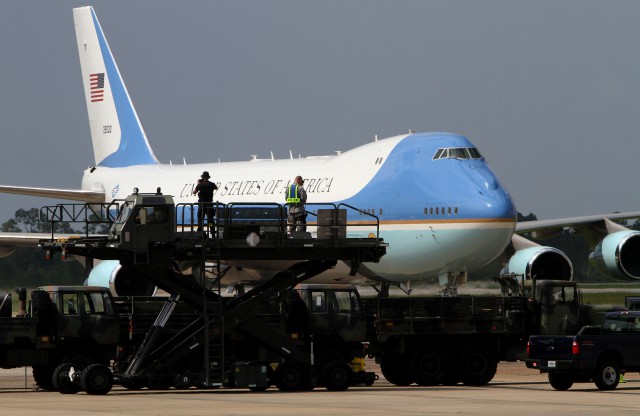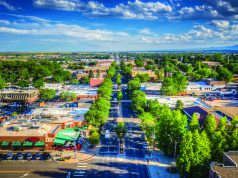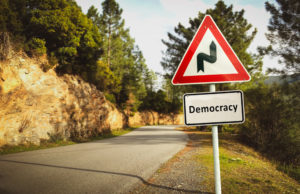
boat and warning of hard times to come, but touting the region’s
continued viability for tourists.
“There’s still a lot of opportunity for visitors to
come down here; a lot of beaches that are not yet affected or will not
be affected,” Obama told reporters after a meeting with Republican
governors
“And we just want to make sure that people who have travel plans down
to the Gulf area remain mindful of that, because if people want to know
what they can do to help folks down here, one of the best ways to help
is to come down here.”
That balancing of boosterism and acknowledged
tragedy is not the only delicate calibration facing Obama this week, as
he plans a first address to the nation about the disaster from the Oval
Office on Tuesday and prepares to meet face-to-face with the leaders of
oil company BP on Wednesday.
Many Americans may want Obama to be harder on BP,
but many others are alert to any hint of anti-business sentiment amid
lingering high unemployment. Some Americans will simply want to hear
his plans for plugging the well, while others expect Obama to seize the
opportunity to boldly re-imagine the nation’s energy future.
And then there is the question of BP, which the
administration must pressure to repair lives, business and wetlands —
but not so hard as to put it out of business, leaving behind a whopping
cleanup and compensation bill.
“You don’t want this horse to collapse in the middle of the race,” said
The president’s visit, the fourth since the
Deepwater Horizon rig explosion, comes amid mounting calls, even among
allies, that Obama appear more in command. It also comes amid mounting
pressure on BP, from both the administration and
The administration has taken a more aggressive
stance toward the company of late, announcing Sunday that it hopes
force BP to create an independently administered escrow account to fund
compensation claims.
In remarks on the coast Monday, however, Obama
refrained from chastising BP. Instead, he said he has already had
“constructive” talks with the company, and hoped the two sides could
arrive at some kind of structured plan at their
A significantly more fiery reception may await BP CEO
In a letter to Hayward on Monday, Rep.
alleged that BP appears to have made a number of short-sighted,
penny-pinching decisions because the well was significantly behind
schedule — -decisions that could have increased the chances of
catastrophe.
The blown deadline for the drilling project “appears
to have created pressure to take shortcuts to speed finishing the
well,” they wrote. ” … Time after time, it appears that BP made
decisions that increased the risk of a blowout to save the company time
or expense.”
In several instances, they said, BP’s decisions
appear to violate industry guidelines and were made despite warnings
from BP’s own personnel and its contractors.
Gheit, the energy analyst, noted that BP had already lost about half its market value, or
BP directors met Monday in
Many on
“If they were to set aside
So far, at least one administration attempt to
ratchet up the pressure on BP appears to have paid off: In a letter
released Monday, BP acceded to a recent
In a letter to Coast Guard Rear Adm.
said the company had revised its oil-capture plans to allow it to
collect more than 50,000 barrels of oil a day by the end of June —
about two weeks earlier than the company had originally planned.
The company has been collecting about 16,000 barrels
per day from the broken well using a containment cap that funnels the
oil to a processing ship. But federal experts have estimated that the
well has been spewing at least 40,000 barrels per day.
BP said the maximum capacity of its current system
is 18,000 barrels per day. An additional plan set to go live Tuesday
will siphon up to 10,000 barrels a day more, using pipes and equipment
from BP’s failed “top kill” plan, which sought to stem the flow of oil
with drilling mud.
For a number of days, the company has planned to
scrap those two systems, eventually replacing them with a new system of
floating risers. The revised plan, however, calls for all of these
plans to work concurrently, said
The company said that in mid-July or later, it will have the capacity to take up 60,000 to 80,000 barrels per day.
Thursday’s congressional hearings promise to shift
the focus away from the troubled and still-unfolding attempts to
contain the oil, and onto what appear to be the equally tragic days
before the blowout.
The letter from Waxman and Stupak points to a number of “crucial” choices BP made at the time that in hindsight proved tragic.
They charge the company decided to use a “risky” well-casing plan in an attempt to save up to
declined to conduct a time-consuming tests of the well’s cement job;
failed to use a device called a “lockdown sleeve” that “would have
prevented the seal at the wellhead from being blown out”; and rejected
the advice of subcontractor
letter states, warned of a “SEVERE gas flow problem” if the extra
sensors weren’t used, but the letter said one BP official worried that
it would take too long to install them.
On
another official recognized the risks, but commented, “who cares, it’s
done, end of story, will probably be fine.”
The administration’s response to the leak has
generated tension at times with the Gulf’s Republican governors. In an
interview Sunday on
On Monday, Obama lunched with Barbour and others at
the end of a pier, where they feasted on mini crab cakes, fried shrimp,
shrimp salad sandwiches and sweet tea.
Later, in 95 degree heat, Obama walked down the pier with Barbour to get snow cones. Both men ordered lemon-lime.
Setting aside larger differences for the moment,
Barbour was heard telling the president, “See, that’s something else we
agree on.”
(Nicholas of the
———
(c) 2010, Tribune Co.
Distributed by McClatchy-Tribune Information Services.














